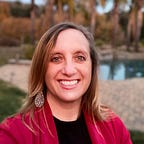Early Impression from Invention Diversity Study:
How to Solve Diversity Data Challenges
Laura Lee Norris, Associate Clinical Professor
Mary Fuller, Senior Clinical Fellow
Joy Baker Peacock, Interim Managing Director, High Tech Law Institute
Sydney Yazzolino, 2L Tech Edge JD student
Santa Clara University School of Law
“It always seems impossible until it’s done.”
~Nelson Mandela
As explained in our previous post, Santa Clara University School of Law is partnering with the United States Patent and Trademark Office (USPTO) to conduct a study on best practices in including diverse individuals in the invention and innovation process. We are soliciting input from any and all individuals that work in innovation and intellectual property to participate.
Please Share Your Own Diversity Challenges, Solutions, and Efforts!
Our confidential SURVEY is open.
So far, we’ve held a handful of roundtable discussions including innovation and intellectual property leaders from a wide variety of industries across the country, and have observed some continuing themes. In today’s era of data-driven decision making, one question that almost all companies have is, “how do we measure success”? And, in particular, “how do we measure success at the cross section of diversity and inclusion and innovation”?
We’ve uncovered two major categories relating to measuring diversity in inventorship; namely:
(a) With stringent national and international privacy laws, how can we access and maintain data that measures diversity information about employee inventors?
(b) In a global workforce, with locations around the world and employees of all different nationalities, how can we agree on a universal corporate definition of diversity, and indicators of success?
With regard to the first question, some tools have been developed to determine the likely gender of inventors listed on patents and patent publications, such as the women inventor indicator search for PCT applications available from the World Intellectual Property Organization, and the Diversity Data Excel Tool developed by Richardson Oliver Law Group. These sort of tools benefit from being publicly-available tools, which may be easier for an in-house intellectual property manager to implement because they don’t involve accessing sensitive employee data. However, there are significant limitations to the capability of these tools. For example, to date no tool has been developed to determine other diversity-type factors that were specifically mentioned in the USPTO Report to Congress on the SUCCESS Act such as race, ethnicity, and veteran status. Companies with large existing patent portfolios are challenged to determine a baseline as to the diversity of inventorship in its current filings. To achieve this goal, an automated tool is likely necessary.
A secondary issue involved in measuring diversity of inventorship involves collection of sensitive data on a go-forward basis. Implementing a program to collect inventors’ diversity data is not for the faint of heart. Whether an actual or perceived roadblock, data privacy laws cast a long shadow over diversity related data collection efforts. We’ve heard from some companies that have integrated their HR software with their patent docketing software to automatically track diversity data. But, it sounds like not all HR departments are ready and willing to explore this type of integration. And, there are no doubt small- to mid- sized companies that may not have HR or IP tools to integrate. The issue of how to share and report employee diversity data seems to represent a substantial hurdle for companies of all sizes.
The task of defining indicators of success is also elusive. Global companies are often not interested in implementing piecemeal programs within particular sites or regions. For this reason, IP managers are under pressure to envision and implement a one-size-fits-all diversity program. So while it may be a bit more straightforward, or at least reasonable, in the United States to envision inventorship diversity goals, it is a bigger challenge to define those targets when including worldwide inventors of all different nationalities. Similarly, the ability to measure the success of a program is essential to its implementation, continued support and funding, and expansion.
We are just beginning to peel back the onion through this study, and are uncovering not only best practices but also common obstacles to increasing diversity of inventors and innovators. Please share your procedures and challenges with us by taking a few minutes to complete our SURVEY!
